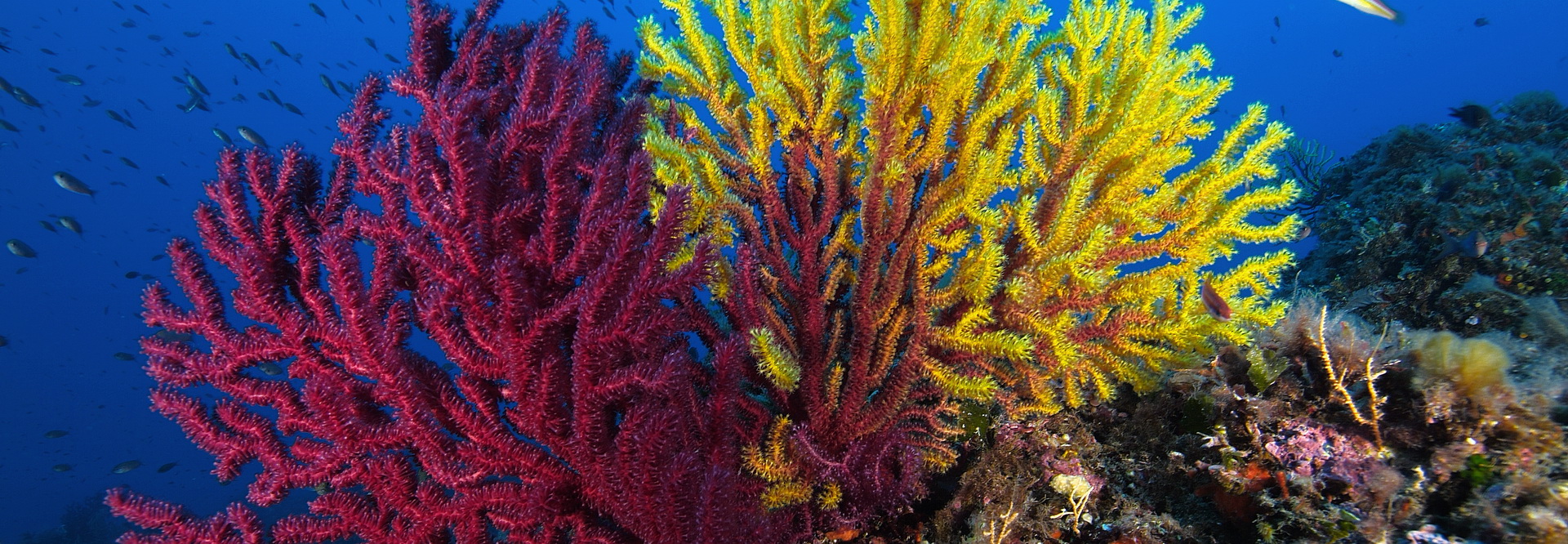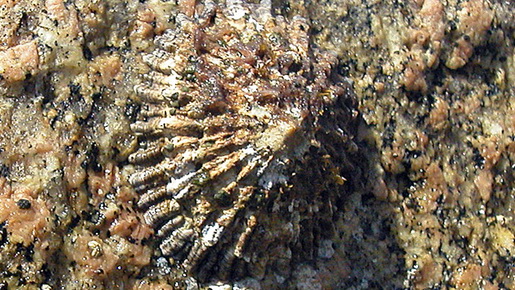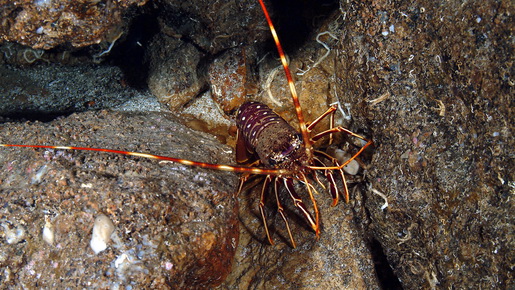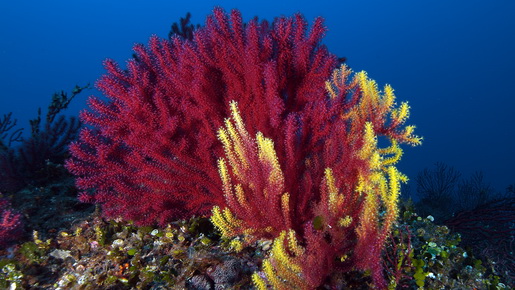Marine invertebrates
The lobster ( Palinurus elephas) this species finds ideal habitat on rocky or gravelly bottoms with algae, dark cavities and coralligenous substrata in general. The bathymetric distribution ranges from 10 to 160 metres. It is well known that this species migrates vertically during the year, but recent data seem to suggest that lobsters are also able to perform large horizontal movements, in very short periods, as already known for some tropical lobsters.
The red gorgonian (Paramuricea clavata) is a colonial organism formed by polyps that constitute the colony. The polyps build fan-shaped tree formations, which can reach a height of one meter. The most common coloration is dark red, but yellow colonies or both can also be found. These organisms are related to the coralligenous habitat, and live on rocky bottoms from 25 m to over 100 m deep.
The Patella ferruginea (Patella ferruginea) lives on hard substrata of both calcareous and granitic nature in the intertidal belt, being able to withstand even long periods of emersion during low tide, up to a few metres of depth. Thanks to its robust foot, it is able to adhere tightly to the substratum forming a water chamber sufficient not to dry the animal.




